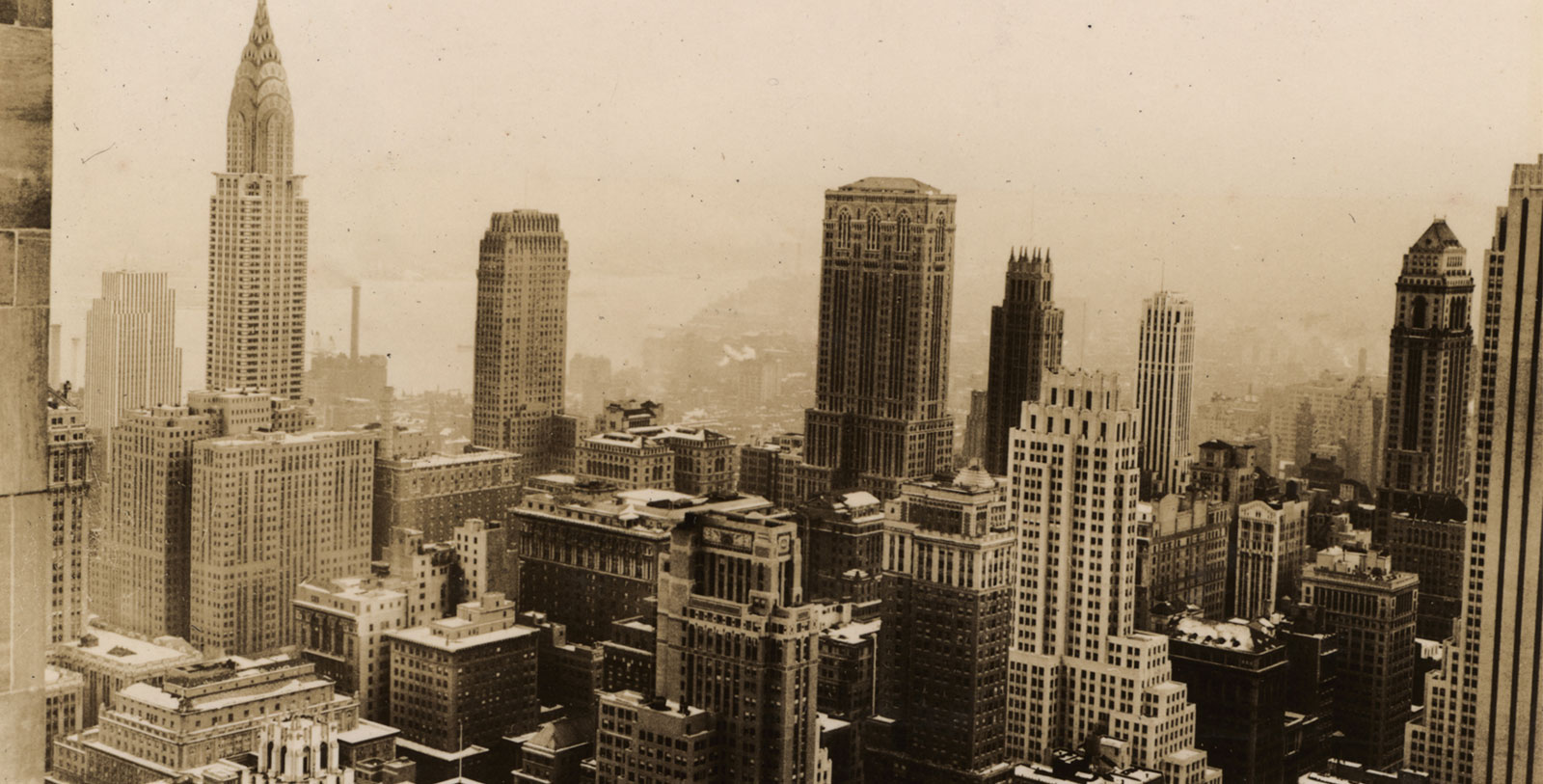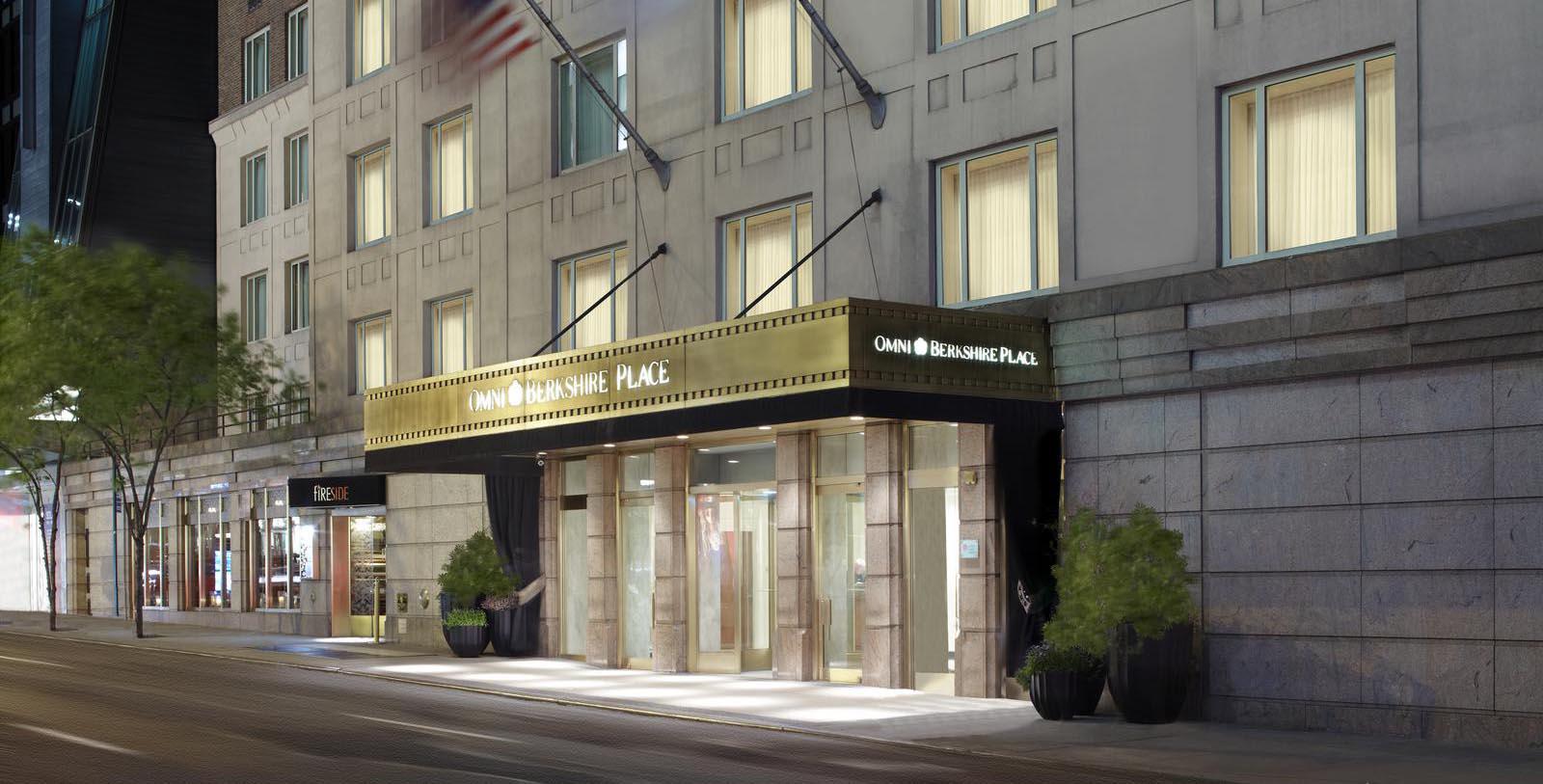Receive for Free - Discover & Explore eNewsletter monthly with advance notice of special offers, packages, and insider savings from 10% - 30% off Best Available Rates at selected hotels.
history
Discover the Omni Berkshire Place New York City with its elegant Classical Revival design.
Omni Berkshire Place, New York City, a member for Historic Hotels of America since 2010, dates back to 1926.
VIEW TIMELINEWarren & Wetmore built the historic landmark Berkshire Place Hotel in 1926 as part of their “Terminal City” vision. When they received their most famous commission—the Grand Central Terminal—part of the plan was to develop residences and hotels in the blocks surrounding the new beaux-arts train station. The idea was to continue the aesthetic out into the neighborhood and more naturally integrate the transit-hub with the rest of the city. The hotel was held-up as a shining example of the Classic-Revival movement sweeping cosmopolitan centers. Artists and socialites were known to make their permanent addresses at the Berkshire because the rooms and suites were exceptionally large for New York and provided a residential experience with the services and amenities of a five-star hotel. In 1942, America’s single greatest musical theatre writing team—Richard Rodgers and Oscar Hammerstein—collaborated on the play that changed Broadway, and American musical theater forever. Writing Oklahoma! in suite 2100, it is now named the Rodgers & Hammerstein Suite in their honor.
The Dunfey Hotel Corporation, which included Omni Hotels and Dunfey Hotels groups, purchased the Berkshire in May 1978, and gave the property a $9.5 million face-lift in the next year. Hong Kong-based Wharf Holdings then purchased the Omni Hotels chain in 1988. In 1995, the Omni Berkshire Place underwent a complete historic restoration of more than $70 million. TRT Holding, Inc. purchased the Omni Hotel chain in 1996. In the fall of 2003, the hotel completed a $4 million enhancement to all the guestrooms, suites, and hallways. In 2007, the hotel opened a new restaurant concept—Fireside Cocktail Cuisine— as well as a redesigned the lobby and 1,200 square feet of new meeting spaces. The most recent renovation occurred in 2010, when Omni Hotels and Resorts partnered with the world-renowned designer, Alexandra Campalimaud. Her unique expertise allowed the Omni Berkshire to modernize the guest experience, while still honoring that glorious midtown past. Now a member of Historic Hotels of America, the Omni Berkshire Place is among the most glamorous holiday destinations in Midtown Manhattan.
-
About the Location +
Located between 5th and Madison Avenues, the Omni Berkshire Place is in a terrific location to explore the vibrant heart of New York City. It is close to dozens of amazing cultural attractions that include St. Patrick’s Cathedral, Central Park, and Museum Mile. New York City’s internationally renowned Theatre District is just a few blocks away, which is home to several prominent entertainment venues like the Minskoff Theatre, the Ambassador Theatre, and the Richard Rodgers Theatre. Perhaps the greatest local landmark in the area is Rockefeller Center. A National Historic Landmark, Rockefeller Center is a complex consisting of 19 commercial buildings that occupy some 22 acres of New York City. Only 14 of the towers are original, though, and are divided by a sunken private street called Rockefeller Plaza. All of the historical structures display some of the finest Art Deco architecture in the entire United States. Among the most famous of the structures to constitute the area are 30 Rockefeller Plaza and Radio City Music Hall. Considered by historian today to be one of the greatest construction projects of the Great Depression era, John D. Rockefeller Jr., was the main force behind its development. Rockefeller championed the project for he saw it as integral in economically revitalizing Midtown Manhattan. Originally envisioned as the site for a new Metropolitan Opera building, the current Rockefeller Center came about after it could not afford to move to the new facility following the market crash of 1929. Nevertheless, Rockefeller carried on, agreeing to plans with the Radio Corporation of America to transform the location into a mass-media complex. Construction on the first buildings began in September 1931 and concluded in 1939. Rockefeller Center has since become one of the most iconic attractions in New York City.
-
About the Architecture +
The Omni Berkshire Place features a wonderful blend of Classical Revival-style architecture. Also known as “Neoclassical,” Classic Revival design aesthetics are among the most common architectural forms seen throughout the United States. This wonderful architectural style first became popularized at the World’s Columbian Exposition, which was held in Chicago in 1893. Many of the exhibits displayed architectural motifs from ancient societies like Rome and Greece. As with the equally popular Colonial Revival style of the same period, Classical Revival architect found an audience for its more formal nature. It specifically relied on stylistic design elements that incorporated such structural components like the symmetrical placement of doors and windows, as well as a front porch crowned with a classical pediment. Architects would also install a rounded front portico that possessed a balustraded flat roof. Pilasters and other sculptured ornamentations proliferated throughout the façade of the building, as well. Perhaps the most striking feature of buildings designed with Classical Revival-style architecture were massive columns that displayed some combination of Corinthian, Doric, or Ionic capitals. With its Greco-Roman temple-like form, Classical Revival-style architecture was considered most appropriate for municipal buildings like courthouses, libraries, and schools. Yet, the form found its way into more commercial uses over time, such as banks, department stores, and of course, hotels. The celebrated architectural firm McKim, Meade and White produced some of the most noteworthy buildings that utilized Classical Revival architecture, with most of their work appearing during the early 20th century. Examples of their portfolio can be found throughout many of American’s major cities, including Philadelphia and New York City. They were later joined by many other prominent companies, including the creators of the Omni Berkshire Place—Warren & Wetmore.
-
Famous Historic Guests +
Richard Rodgers, composer responsible for writing such shows as The King and I, The Sound of Music, and Oklahoma!
Oscar Hammerstein II, playwright responsible for writing such shows The King and I, The Sound of Music, and Oklahoma!
-
Film, TV and Media Connections +
While no movie or film was ever shot at the Omni Berkshire Place, it was the point of origin for the celebrated musical, “Oklahoma!” in 1942, two of the nation’s most celebrated playwrights—Richard Rodgers and Oscar Hammerstein— rented out Suite 2100 in order to find a seclude space to craft the words for their celebrated show. Based on Lynn Riggs earlier play, Green Grow the Lilacs, Oklahoma! chronicled the story of a young girl named Laurey Williams who navigated the tense courtship of two rival suitors, cowboy Curly McLain and the sinister Jud Fry. The musical featured a number of classic recitals, including “Oh, What a Beautiful Mornin,” “All er Nothin,” and “The Surrey with the Fringe Top Hat.” Debuting on Broadway on March 31, 1943, Oklahoma! became an immediate hit. The performance eventually won Rodgers and Hammerstein eight different awards, including a coveted Pulitzer Prize in 1944. The cultural legacy of Oklahoma! has proved to be great as it has run for an unprecedented 2,212 performances. It was even adapted into film in 1955, which starred Gordon MacRae, Shirely Jones, and Rod Steiger. The film won the Academy Award for Best Original Musical (as well as Best Sound Mixing) and is recognized by the Library of Congress on its National Film Registry.

































